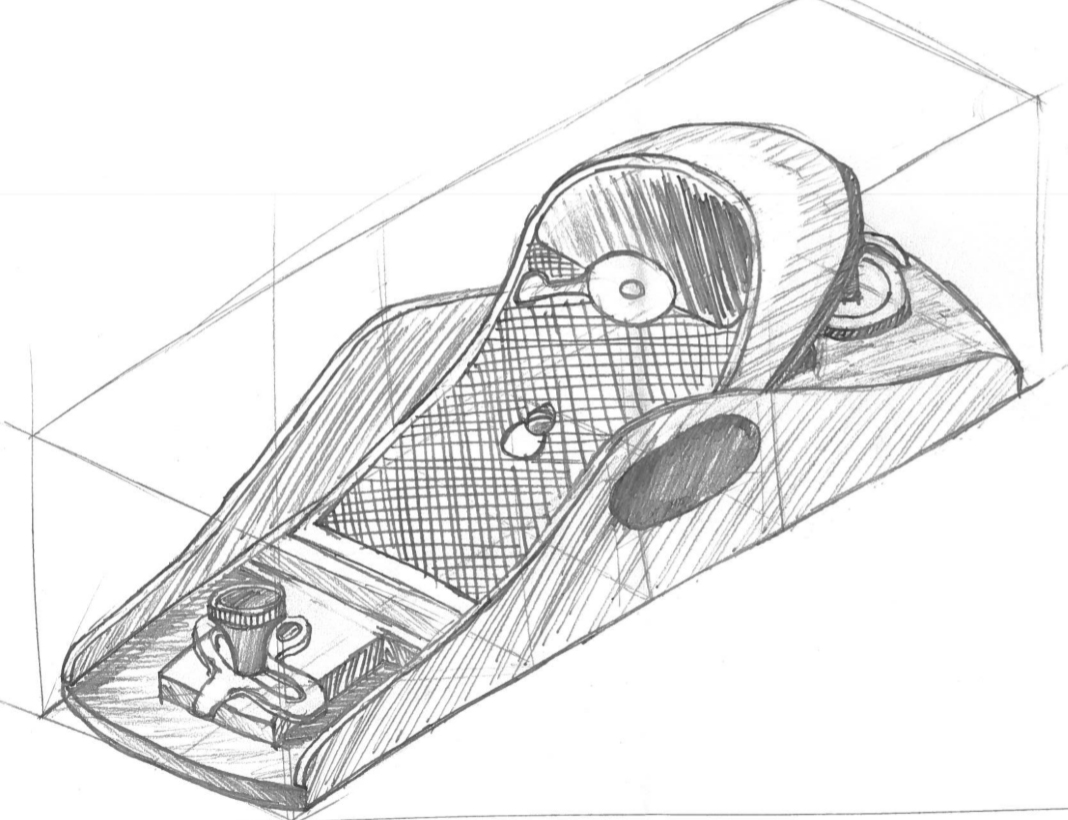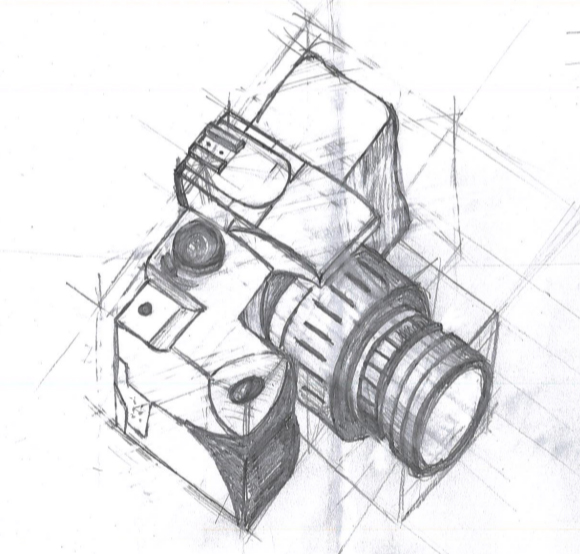Transformative Experiences: Freehand Sketching
Do you think that mechanical engineers should have the skill to communicate their ideas via quick and effective freehand sketches? Professors Richard Marklin from Marquette University, USA, and Heike Vallery from the Faculty of Mechanical Engineering (ME) at TU Delft agree with you.
Nowadays many students exclusively use CAD and other digital software during the design process. These are valuable tools to flesh out, refine, and materialize ideas. However, students now even use these digital tools for the first creative steps in the brainstorming stage, which limits the number of ideas they can generate compared to what they could sketch freehand in the same time. CAD also limits the brainstorming of new concepts and ideas in a group setting because it is not as quick and effective as freehand sketching. Marklin and Vallery recognised this deficiency in engineering education and joined forces to test whether quick visual communication via freehand sketching could be integrated into the mechanical engineering curriculum at TU Delft.
Their international partnership was set up in the summer of 2018 with Marklin planning to spend his sabbatical semester in the fall of 2019 teaching the freehand sketching course at TU Delft.
Course Content and Methodology
In the course offered now (first quarter, 2019), Marklin is teaching graduate ME engineering students the theory and practice of the parallel drawing systems, which are orthographic, isometric and oblique projections. A parallel drawing system differs from the convergent system, also called perspective, in that lines that are parallel in nature are parallel in the drawing. In perspective, parallel lines converge to a vanishing point, which is how the human eye sees the world. Parallel drawing systems are effective for engineering because engineers tend to draw small objects, which can be conveyed effectively by orthographic, isometric and oblique views.
In each class, Marklin shows students how to draw objects in real-time using a document camera that projects his drawing on a large screen. Students had several early homework assignments that consisted of drawing small objects with the various views. Later homework assignments required students to visually communicate new designs of products or mechanisms with the parallel drawing systems.
Short- and long-term goals
The short-term goal of the course is to teach students how to visually communicate their ideas with quick sketches. This goal was accomplished in the course and was readily apparent in the first few weeks. Students improved their ability to visually communicate their ideas of products and mechanisms greatly, as evinced by sketches of a pipe connector that was drawn in the first and ninth weeks of the class.
The long-term goal is more important, though. The long-term objective is to improve the creativity and innovation of students’ ideas that address critical problems. “I stress in the class that we are not making art, but rather visual communicating ideas and concepts. The intent of the class is to enable students to enhance the innovation of their designs through visual communication,” Marklin said.
Freehand Sketching for Engineers - Video 3 - Orthographic and Circles - Marklin
The future of the course
Student response to the course was very positive. Several students reported their engineering student friends were interested in taking the course and queried when the course will be offered again.
“We saw strong demand for this course among students, and we are impressed by what participants of the course can now do. Therefore, we aim to continue offering the freehand sketching course once Professor Marklin leaves TU Delft at the end of his exchange,” Vallery said.
Marklin and Vallery aim to use electronic means to follow-up on the course and on design-related projects that they started during his residency at TU Delft. “We hope that Professor Marklin will return regularly for shorter block courses. We also plan to involve and train lecturers at TU Delft to support and to make the course fully sustainable in the curriculum,” Vallery added.
TU Delft DIY studio
In addition to serving as a guest lecturer at ME, professor Marklin was active in the TU Delft Teaching Lab. “I used the DIY (Do It Yourself) studio in the Teaching Lab to make a set of 10 short videos that comprise most of the content of the course. These videos show how to visually communicate ideas with only pencil and paper (no drawing instruments).” Marklin created a YouTube channel (Marklin Freehand Sketcher) that serves as the platform for the videos.
When Marklin saw the DIY studio, he was very impressed. “The DIY studio is a world-class facility that few academic institutions offer. It is a self-contained system with hardware and software that enables lecturers to create high-quality videos with minimal instruction. Without the DIY mini-studio, I would have not been able to make any videos for the course.”
Videos for the freehand sketching course provide several benefits:
-
Students can use them to enhance their understanding of concepts and methods after class lectures.
-
Videos can serve as course content for a flipped or MOOC course.
-
The general public can learn about the benefits of freehand sketching to the engineering profession and possibly other professions.
-
STEAM (Science, Technology, Engineering, Art and Math) courses could use these videos as content or class exercises. The purpose of STEAM courses is to introduce engineering and other technical fields to primary and secondary school students and encourage them to explore engineering as a profession.
Exhibition of Students’ Final Projects
Interested about the student results of Professor Marklin’s freehand sketching course? Visit the exhibition of students’ sketches on 6 November in the entrance hall of ME, or contact him at richard.marklin@marquette.edu. If you wish to find out more about the experience of running the freehand sketching course at TU Delft, contact Heike Vallery at h.vallery@tudelft.nl.
Article in Delta: https://www.delta.tudelft.nl/article/how-become-sketching-master-eight-weeks



